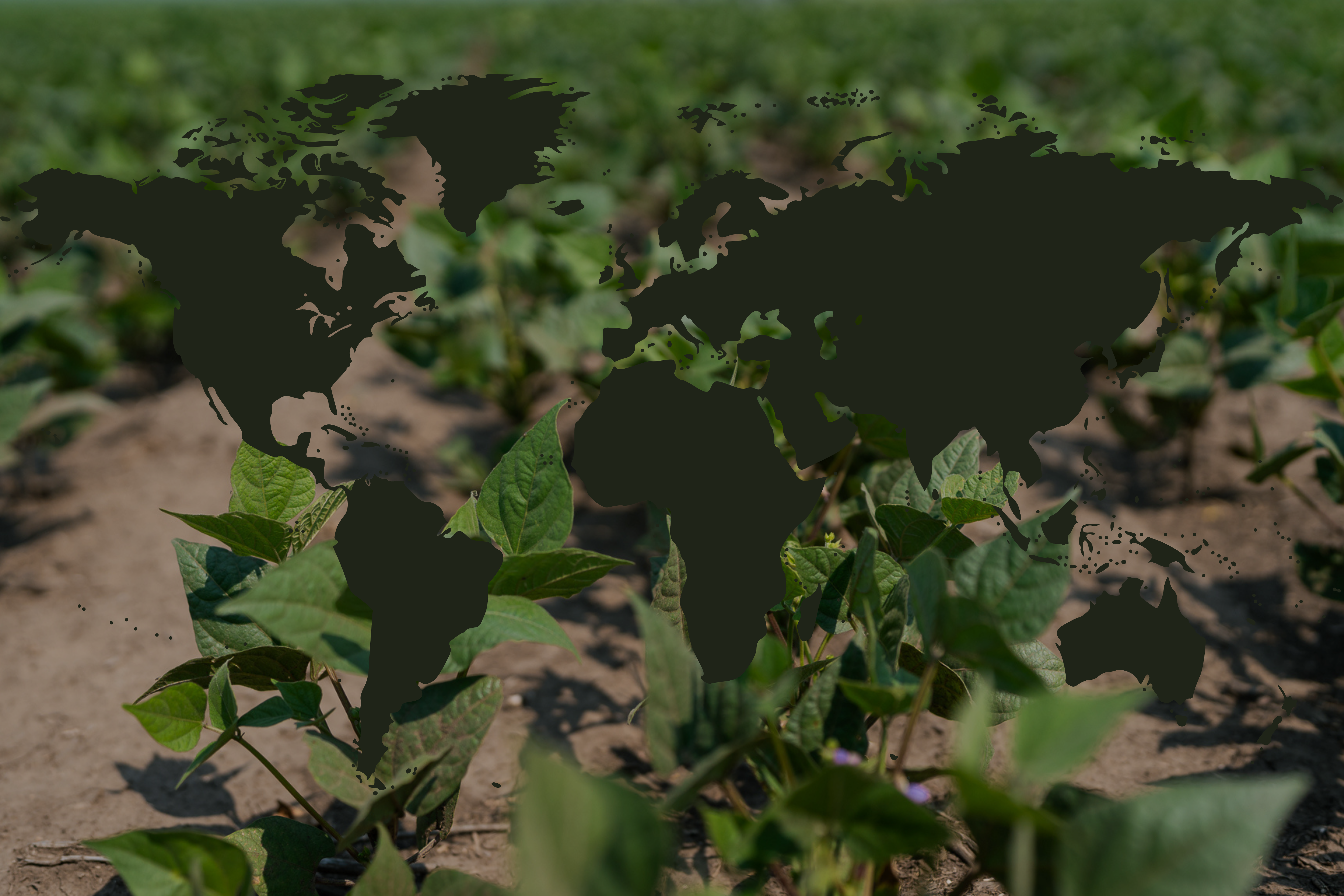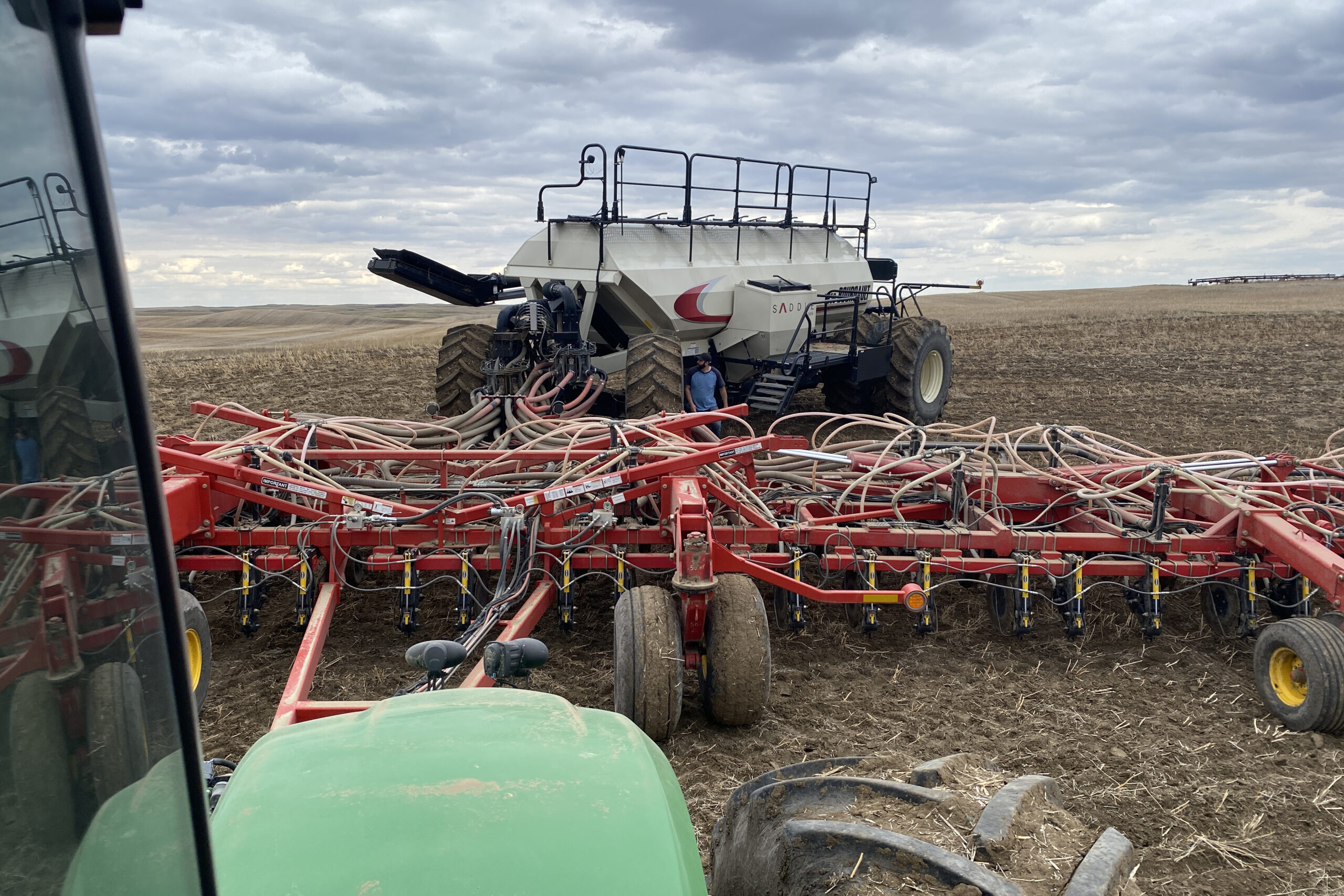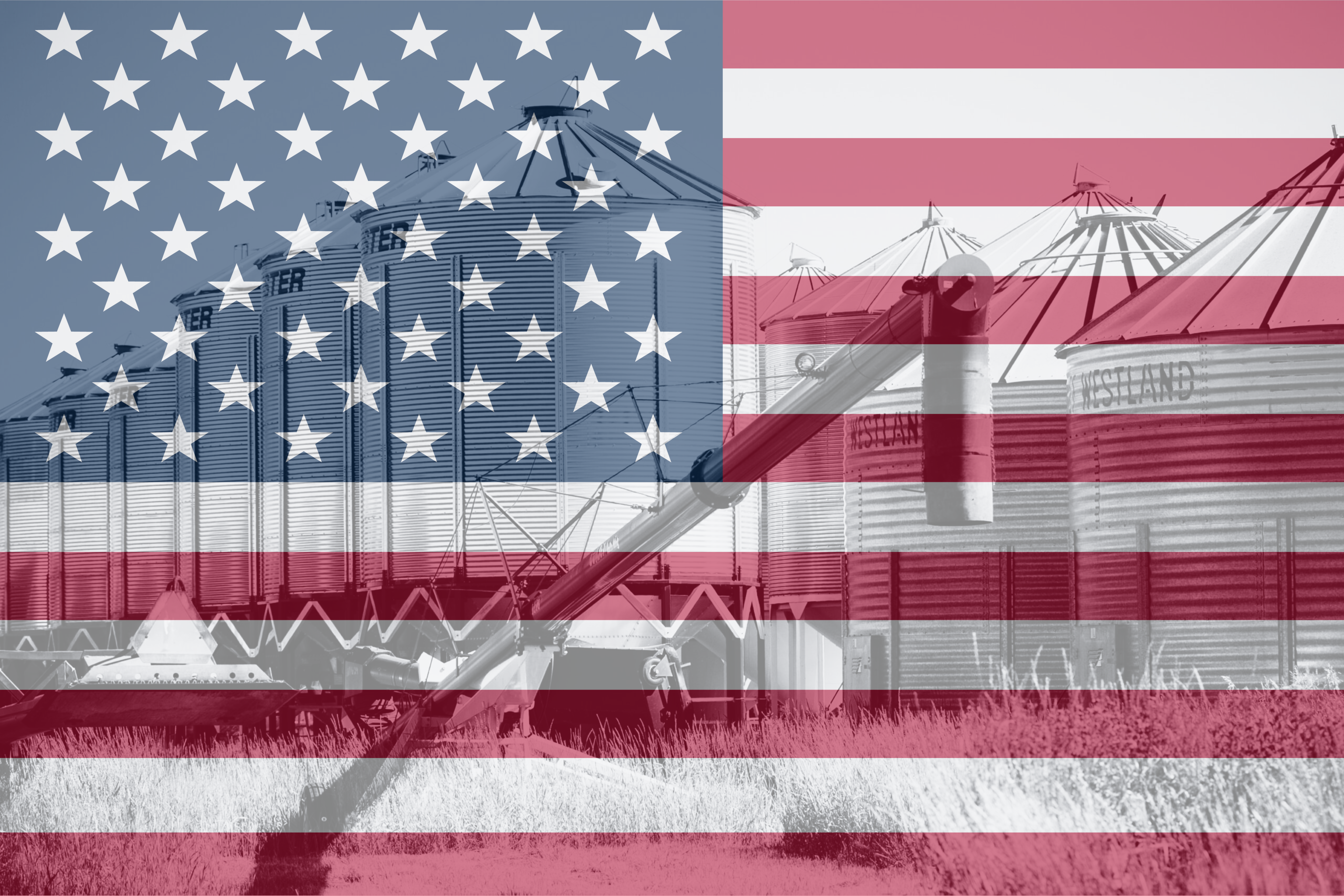By Brian Clancey, STAT Publishing
October 2023
Markets for chickpea and dry edible beans are starting the 2023-24 marketing year with optimism over price prospects in the face of lower supply estimates for the country and prospects global output will be less than feared.
Statistics Canada’s (StatCan) September production continued to call for a solid drop in yields from last year. The forecast was based on satellite and other agroclimatic data. There will not be a direct survey of farmers until StatCan finalizes its production estimates for the year.
It is important to note that yields provided by growers and crop reporters reported to provincial agriculture departments and grain companies are higher than the federal numbers. However, the differences are not big enough to suggest Canada’s available supply of beans or chickpeas is up over last year.
Chickpeas
The September forecasts suggest this year’s chickpea harvest increased modestly over last year, advancing from 127,900 to 134,400 tonnes with the increase in seeded area offset by lower average yields.
More importantly, the carryover from last season is believed to be only 27,000 tonnes, down from 155,000 a year ago. If those numbers are accurate and imports decline from 45,000 to 39,000 tonnes, Canada’s available supply is under 210,000 tonnes compared to 328,000 last season.
Canada is a not a price setter in chickpeas, but it has been an important supplier in recent years because of smaller Kabuli chickpea harvests in Mexico and a few other origins. In the last few years, our most important buyers were the United States (U.S), Pakistan, and Turkey.
Given the current supply situation, however, it will be impossible for Canada to maintain average export volumes to those destinations. Looking at this, growers, processors, and exporters are feeling bullish about price prospects. There are clouds on the horizon, however.
Production in the U.S. is up sharply over last year because of a moderate increase in seeded area and a 26% jump in average yields. Farmers in Montana say they harvested 1,310 pounds per acre (lbs/ac), up from just 770 last year, offsetting declines in North Dakota and Washington state. The latest United States Department of Agriculture (USDA) estimates peg output at roughly 224,900 tonnes from 380,300 acres, compared to 165,900 from 353,100 acres last year.
The carryover from the 2022-23 marketing year is estimated at 22,000 tonnes, up from 3,000 a year ago. As a result, the available supply of domestically produced chickpeas in the U.S. likely jumped from 168,900 to 246,900 tonnes. Not only does this reduce the quantity of chickpeas the country needs to buy from Canada, it will allow an expansion in exports.
The major cloud facing markets in 2024 is that farmers in Mexico planted all the chickpeas they could. Even with average yields, production could double. Depending on the urgency of farmers and exporters in Mexico to sell product in 2024, Canada and the U.S. should see reduced buying interest from importers early in 2024.
However, a strong regional focus remains in place. Combined chickpea production in the two countries is up over last year. Supplies are down because of a sharp drop in ending stocks available, however, falling from 452,000 to 408,000 tonnes. It seems likely residual supplies will rise by the end of the 2023-24 marketing year, though unsold stocks of chickpeas in Canada could be down even as those in the U.S. rise.
Canadian Chickpea Supply And Demand
| 2017 | 2018 | 2019 | 2020 | 2021 | 2022 | 2023 | |
| Area (acres) | 241,000 | 442,900 | 391,900 | 297,800 | 221,950 | 233,800 | 315,600 |
| Yield (pounds/acre) | 1,341 | 1,550 | 1,415 | 1,587 | 907 | 1,206 | 939 |
| Production (tonnes) | 146,585 | 311,300 | 251,500 | 214,400 | 91,288 | 127,929 | 134,400 |
| Imports (tonnes) | 48,765 | 52,657 | 49,086 | 41,633 | 30,086 | 45,000 | 39,000 |
| Carry-In (tonnes) | 10,000 | 13,000 | 140,000 | 255,000 | 277,000 | 155,000 | 27,000 |
| Stocks (tonnes) | 205,351 | 376,957 | 440,586 | 511,033 | 398,374 | 327,929 | 200,400 |
| Disappearance | |||||||
| Exports (tonnes) | 116,141 | 149,501 | 107,376 | 163,513 | 179,323 | 230,278 | 105,200 |
| Seed (tonnes) | 34,558 | 30,260 | 22,945 | 17,581 | 18,205 | 24,528 | 24,628 |
| Feed & Waste (tonnes) | 7,000 | 6,696 | 5,600 | 5,200 | 6,800 | 4,800 | 5,838 |
| Other Domestic (tonnes) | 34,652 | 50,500 | 49,665 | 47,739 | 39,046 | 41,323 | 39,734 |
| Total Usage (tonnes) | 192,351 | 236,957 | 185,586 | 234,033 | 243,374 | 300,929 | 175,400 |
| Ending Stock (tonnes) | 13,000 | 140,000 | 255,000 | 277,000 | 155,000 | 27,000 | 25,000 |
| Stock/Use Ratio | 6.8% | 59.1% | 137.4% | 118.4% | 63.7% | 9.0% | 14.3% |
Forecasts by STAT Market Research based on data from Statistics Canada.
Global Kabuli Chickpea Supply-Demand Estimates
| 2017 | 2018 | 2019 | 2020 | 2021 | 2022 | 2023 | |
| Area (hectares) | 1,902,000 | 2,635,000 | 2,018,000 | 1,705,000 | 1,800,000 | 1,784,000 | 1,816,000 |
| Yield (kilograms/hectare) | 1,274 | 1,274 | 1,426 | 1,360 | 1,019 | 1,114 | 1,146 |
| Production (tonnes) | 2,424,000 | 3,357,000 | 2,878,000 | 2,318,000 | 1,834,000 | 1,988,000 | 2,082,000 |
| Carry-in (tonnes) | 94,000 | 268,000 | 635,000 | 612,000 | 337,000 | 271,000 | 205,000 |
| Supply (tonnes) | 2,518,000 | 3,625,000 | 3,513,000 | 2,930,000 | 2,171,000 | 2,259,000 | 2,287,000 |
| Trade (tonnes) | 793,000 | 1,193,000 | 1,113,000 | 1,122,000 | 829,000 | 962,000 | 902,000 |
| Inferred Use (tonnes) | 2,250,000 | 2,990,000 | 2,901,000 | 2,593,000 | 1,900,000 | 2,054,000 | 2,047,000 |
| Ending Stock (tonnes) | 268,000 | 635,000 | 612,000 | 337,000 | 271,000 | 205,000 | 240,000 |
| Stock/Use Ratio | 11.9% | 21.2% | 21.1% | 13.0% | 14.3% | 10.0% | 11.7% |
Estimates by STAT based data from the The Food and Agriculture Organization (FAO), USDA, StatCan, Australian Bureau of Agricultural and Resource Economics and Sciences (ABARES), and other entities.
Dry Beans
Dry edible beans face a similar situation despite higher than hoped residual stocks of pinto, black, and navy beans in North Dakota. The USDA will update its production forecast in October. Based on earlier yield projections, coloured bean output in Canada and the U.S. likely dropped from 1.24 to 1.09 million tonnes, while the white bean harvest slipped from 295,000 to 268,000 metric tonnes.
There was an overall reduction in the quantity of beans carried over from the previous marketing year. As a result, available supplies of white beans in the two countries may have dropped from 462,000 to 374,000 tonnes and coloured beans from 1.48 to 1.37 million tonnes.
A large part of the navy bean crop is grown in Ontario, while western Canada tends to focus on coloured beans, with pinto being the most important. That focus adds weight to events in North Dakota, which accounts for an average of 74% of the seeded area for pinto beans and 66% of the U.S. harvest.
In most years, the U.S. is Canada’s second most important pinto bean destination after Angola. Consequently, there was some surprise to see that ending stocks of pinto beans in North Dakota will be up sharply from last year.
In its survey of licensed grain dealers in the state, North Dakota State University’s (NDSU) Upper Great Plains Transportation Institute found that stocks held by processors jumped from 79,400 tonnes in 2022 to almost 148,400 tonnes as of July 31 this year. This is the biggest inventory since 2010, when the state’s processors were sitting on 161,500 tonnes.
Higher than expected ending stocks will offset some of the impact of lower average pinto bean yields in the U.S., but without a major increase in yields in North Dakota, available supplies will likely be down from last season.
For bean growers in Western Canada, the situation in North Dakota is significant because they have the capacity to sell directly to processors in the U.S. As a result, bids in the U.S. influence prices Canadian processors are willing to pay for equivalent qualities.
Smaller production and little change in disappearance should combine to reduce the amount of unsold beans in both Canada and the U.S. by the end of the 2023-24 marketing campaign. While Kabuli chickpeas face a risk of prices setting their seasonal highs during the first half of the marketing campaign, values for beans could trend higher as remaining supplies fall relative to prospective demand.
Estimated Breakdown of Canadian Bean Production By Class
| Area (acres) | 2017 | 2018 | 2019 | 2020 | 2021 | 2022 | 2023 |
| Navy/Pea | 103,000 | 89,400 | 117,900 | 132,200 | 112,900 | 80,900 | 71,418 |
| Black | 49,000 | 35,800 | 52,476 | 61,500 | 46,400 | 43,000 | 37,283 |
| Cranberry | 8,000 | 25,700 | 17,400 | 19,890 | 24,800 | 11,100 | 7,834 |
| Dark Red Kidney | 4,000 | 20,100 | 23,000 | 32,500 | 29,800 | 15,100 | 25,728 |
| Great Northern | 23,000 | 24,395 | 25,868 | 36,400 | 25,000 | 10,800 | 15,307 |
| Light Red Kidney | 4,000 | 14,200 | N/A | 5,700 | 6,700 | 6,000 | 8,154 |
| Pinto | 80,000 | 88,500 | 85,535 | 125,900 | 131,200 | 83,700 | 88,943 |
| Small Red | 3,000 | 7,400 | 3,735 | 26,650 | 19,900 | 16,429 | 15,824 |
| Other | 89,100 | 57,805 | 69,387 | 16,460 | 27,099 | 30,571 | 42,984 |
| Total | 363,100 | 363,300 | 395,300 | 457,200 | 423,799 | 297,600 | 317,700 |
| Production (tonnes) | 2017 | 2018 | 2019 | 2020 | 2021 | 2022 | 2023 |
| Navy/Pea | 94,700 | 88,500 | 86,200 | 144,800 | 102,200 | 88,600 | 64,000 |
| Black | 45,300 | 34,400 | 43,700 | 59,300 | 27,000 | 27,200 | 28,000 |
| Cranberry | 7,700 | 22,400 | 16,600 | 19,600 | 26,200 | 10,700 | 7,000 |
| Dark Red Kidney | 3,400 | 19,100 | 13,800 | 32,300 | 32,700 | 16,400 | 23,000 |
| Great Northern | 27,000 | 32,500 | 31,000 | 42,700 | 23,700 | 11,100 | 16,000 |
| Light Red Kidney | 4,100 | 10,600 | N/A | 5,830 | 5,500 | 5,500 | 6,000 |
| Pinto | 89,900 | 74,900 | 71,700 | 138,800 | 113,500 | 91,800 | 79,000 |
| Small Red | 4,000 | 9,000 | 2,800 | 34,600 | 15,000 | 15,500 | 13,000 |
| Other | 78,300 | 75,600 | 62,100 | 11,870 | 17,773 | 46,194 | 48,633 |
| Total | 354,400 | 367,000 | 327,900 | 489,800 | 363,573 | 312,994 | 284,633 |
BASED on data from StatCan and provincial crop insurance data. 2023 production is estimated based on the normal relationship between national and class yields. Other includes all classes.
Canadian Dry Edible Bean Supply And Demand
| 2017 | 2018 | 2019 | 2020 | 2021 | 2022 | 2023 | |
| Area (acres) | 241,000 | 442,900 | 391,900 | 297,800 | 221,950 | 233,800 | 315,600 |
| Yield (pounds/acre) | 1,341 | 1,550 | 1,415 | 1,587 | 907 | 1,206 | 939 |
| Production (tonnes) | 146,585 | 311,300 | 251,500 | 214,400 | 91,288 | 127,929 | 134,400 |
| Imports (tonnes) | 48,765 | 52,657 | 49,086 | 41,633 | 30,086 | 45,000 | 39,000 |
| Carry-In (tonnes) | 10,000 | 13,000 | 140,000 | 255,000 | 277,000 | 155,000 | 27,000 |
| Stocks (tonnes) | 205,351 | 376,957 | 440,586 | 511,033 | 398,374 | 327,929 | 200,400 |
| Disappearance | |||||||
| Exports (tonnes) | 116,141 | 149,501 | 107,376 | 163,513 | 179,323 | 230,278 | 105,200 |
| Seed (tonnes) | 34,558 | 30,260 | 22,945 | 17,581 | 18,205 | 24,528 | 24,628 |
| Feed & Waste (tonnes) | 7,000 | 6,696 | 5,600 | 5,200 | 6,800 | 4,800 | 5,838 |
| Other Domestic (tonnes) | 34,652 | 50,500 | 49,665 | 47,739 | 39,046 | 41,323 | 39,734 |
| Total Usage (tonnes) | 192,351 | 236,957 | 185,586 | 234,033 | 243,374 | 300,929 | 175,400 |
| Ending Stock (tonnes) | 13,000 | 140,000 | 255,000 | 277,000 | 155,000 | 27,000 | 25,000 |
| Stock/Use Ratio | 6.8% | 59.1% | 137.4% | 118.4% | 63.7% | 9.0% | 14.3% |
Forecasts by STAT based on data from StatCan. All classes are combined.
Combined U.S. and Canada Pulse Production Estimates For 2023
| Area (acres) | 2017 | 2018 | 2019 | 2020 | 2021 | 2022 | 2023 |
| Lentils | 5,509,000 | 4,548,000 | 4,267,000 | 4,756,000 | 4,909,000 | 4,981,000 | 4,214,000 |
| Peas | 5,244,000 | 4,485,000 | 5,446,000 | 5,270,000 | 4,830,000 | 4,291,000 | 4,002,000 |
| White Beans | 401,000 | 357,000 | 374,000 | 471,000 | 389,000 | 287,000 | 283,000 |
| Colored Beans | 1,477,000 | 1,276,000 | 1,364,000 | 1,795,000 | 1,493,000 | 1,315,000 | 1,334,000 |
| Chickpeas | 867,000 | 1,306,000 | 845,000 | 552,000 | 589,000 | 587,000 | 696,000 |
| Total | 13,498,000 | 11,972,000 | 12,296,000 | 12,844,000 | 12,210,000 | 11,461,000 | 10,529,000 |
| Production (tonnes) | 2017 | 2018 | 2019 | 2020 | 2021 | 2022 | 2023 |
| Lentils | 2,898,000 | 2,573,000 | 2,623,000 | 3,204,000 | 1,749,000 | 2,550,000 | 1,801,000 |
| Peas | 4,761,000 | 4,309,000 | 5,252,000 | 5,585,000 | 2,637,000 | 4,111,000 | 3,062,000 |
| White Beans | 377,000 | 367,000 | 298,000 | 457,000 | 323,000 | 295,000 | 268,000 |
| Colored Beans | 1,336,000 | 1,173,000 | 1,014,000 | 1,590,000 | 1,103,000 | 1,241,000 | 1,094,000 |
| Chickpeas | 469,000 | 892,000 | 535,000 | 400,000 | 220,000 | 294,000 | 359,000 |
| Total | 9,841,000 | 9,314,000 | 9,722,000 | 11,236,000 | 6,032,000 | 8,491,000 | 6,584,000 |
| Carry-In (tonnes) | 2017 | 2018 | 2019 | 2020 | 2021 | 2022 | 2023 |
| Lentils | 320,000 | 878,000 | 861,000 | 214,000 | 443,000 | 228,000 | 152,000 |
| Peas | 505,000 | 814,000 | 482,000 | 452,000 | 669,000 | 372,000 | 660,000 |
| White Beans | 37,000 | 81,000 | 108,000 | 50,000 | 158,000 | 167,000 | 106,000 |
| Colored Beans | 145,000 | 241,000 | 204,000 | 31,000 | 224,000 | 242,000 | 273,000 |
| Chickpeas | 20,000 | 72,000 | 400,000 | 421,000 | 298,000 | 158,000 | 49,000 |
| Total | 1,027,000 | 2,086,000 | 2,055,000 | 1,168,000 | 1,792,000 | 1,167,000 | 1,240,000 |
| Supply (tonnes) | 2017 | 2018 | 2019 | 2020 | 2021 | 2022 | 2023 |
| Lentils | 3,218,000 | 3,451,000 | 3,484,000 | 3,418,000 | 2,192,000 | 2,778,000 | 1,953,000 |
| Peas | 5,266,000 | 5,123,000 | 5,734,000 | 6,037,000 | 3,306,000 | 4,483,000 | 3,722,000 |
| White Beans | 414,000 | 448,000 | 406,000 | 507,000 | 481,000 | 462,000 | 374,000 |
| Colored Beans | 1,481,000 | 1,414,000 | 1,218,000 | 1,621,000 | 1,327,000 | 1,483,000 | 1,367,000 |
| Chickpeas | 489,000 | 964,000 | 935,000 | 821,000 | 518,000 | 452,000 | 408,000 |
| Total | 10,868,000 | 11,400,000 | 11,777,000 | 12,404,000 | 7,824,000 | 9,658,000 | 7,824,000 |
BASED on data from StatCan and USDA.
Brian Clancey is the Editor and Publisher of www.statpub.com market news website and President of STAT Publishing Ltd. He can be reached at editor@statpub.com.


